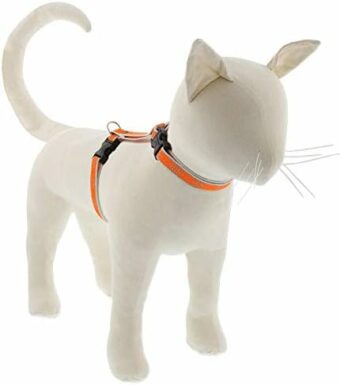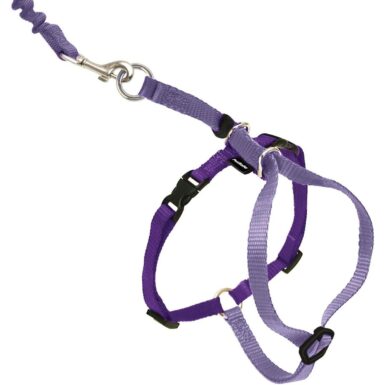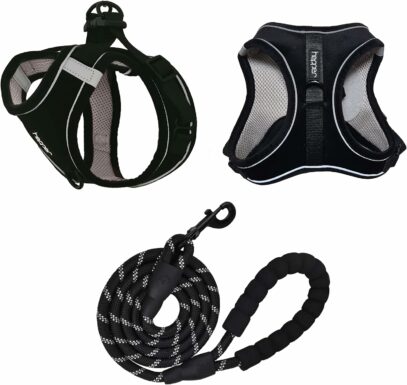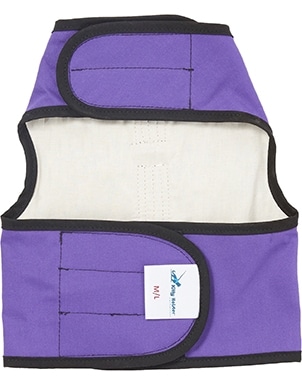While cats aren’t known to be leash walkers, many can learn to wear a harness and explore the outside. Occurring walks together with your cat is a superb type of exercise, and it may possibly reduce boredom for particularly energetic and curious cats.
Similar to dogs wear different sorts of harnesses, yow will discover a couple of different kinds of harnesses for cats. Each sort of harness has its own set of benefits and drawbacks. We’ll go over every one to show you how to determine which sort of cat harness is best on your cat.
How Are Cat Harnesses Classified?
Cat harnesses are typically classified into 4 differing kinds:
- H-style
- Y-style
- Vest-style
- Jacket-style
It’s also possible to easily tell them apart because they’ve fairly distinct appearances. Each style has specific features and functions that suit several types of cats. Normally, H-style and Y-style harnesses are probably the most common varieties of harnesses, they usually’re good for leisurely walks and exploration. Vest-style and jacket-style harnesses are far more durable and sometimes higher fitted to more energetic and athletic cats.
The 4 Kinds of Cat Harnesses
1. H-Style
| Material: | Nylon, leather |
| Best for: | Docile cats, cats that don’t like restriction |
The H-style harness is probably the most common sort of harness. It got its name resulting from its frame looking like an “H.” It often has two loops. One loop goes over a cat’s head and rests on their neck, while the opposite loop wraps across the chest.
H-style harnesses are less restrictive than other varieties of harnesses. So, they’re often a preferred alternative for cats which might be beginning to wear harnesses. Nevertheless, smaller and leaner cats are vulnerable to escape from them. So, it’s vital to buy the proper size.
2. Y-Style
| Material: | Nylon, leather |
| Best for: | Docile cats, cats that don’t like restriction |
Y-style harnesses are also called minimalist harnesses. They give the impression of being much like H-style harnesses, but they don’t wrap around your cat’s neck. The leash connects to a loop positioned at the bottom of the shoulders, so it’s often more comfortable for cats that tend to drag or leap.
Much like H-style harnesses, the Y-style harness works well with cats that prefer less restriction. Nevertheless, it’s one other harness that’s also easy for nimble cats to flee from.
3. Vest-Style
| Material: | Nylon, mesh |
| Best for: | Lively cats, escape artists |
The vest-style harness has a safer fit and is best fitted to athletic cats and escape artists. It’s also often more comfortable for cats to wear and is less likely than H-style and Y-style harnesses to cause chafing.
Since vest-style harnesses have quite a bit more coverage, some cats can feel restricted by them at first. So, it’s often best to get your cat used to wearing an H-style or Y-style harness before introducing your cat to a vest-style harness.
4. Jacket-Style
| Material: | Nylon, mesh, various materials |
| Best for: | Cats living in colder climates |
Jacket-style harnesses offer probably the most coverage, they usually’re useful if you happen to live in an area that has colder winters. Should you don’t live in a colder climate, it’s often not obligatory to make use of a jacket-style harness, as vest-style harnesses will often suffice.
Jacket-style harnesses will feel probably the most restrictive for cats, so most cats that don’t normally enjoy wearing clothes also won’t like wearing a jacket-style harness. Nevertheless, they do a superb job of keeping your cat warm while they play outside through the colder months.
Easy methods to Measure Your Cat for a Harness
Getting proper measurements of your cat will greatly reduce the chance of injury and escaping from a harness. The measurement that have to be accurately measured is your cat’s chest.
Wrap a tape measure across the widest a part of your cat’s chest. If you have got a long-haired cat, ensure the tape measure is wrapped securely across the chest and shut to the skin.
When you measure your cat’s chest, you may start to buy harnesses. Most harnesses are adjustable, so search for a harness that has maximum and minimum adjustable sizes that fall just above and slightly below your cat’s chest measurement. It will ensure that you would be able to change the scale of the harness to be an ideal fit on your cat.
Conclusion
Cats can explore the good outdoors by wearing several different harnesses. H-style and Y-style harnesses have minimalist designs that work well with more docile cats and cats that don’t like the sensation of wearing clothes. Vest-style harnesses are higher for energetic cats because they supply a safer fit and reduce chafing. Should you live in a colder climate, look into getting a jacket-style harness on your cat in order that they will still play outdoors when it starts to get cold.
Featured Image Credit: goldeneden, Shutterstock






